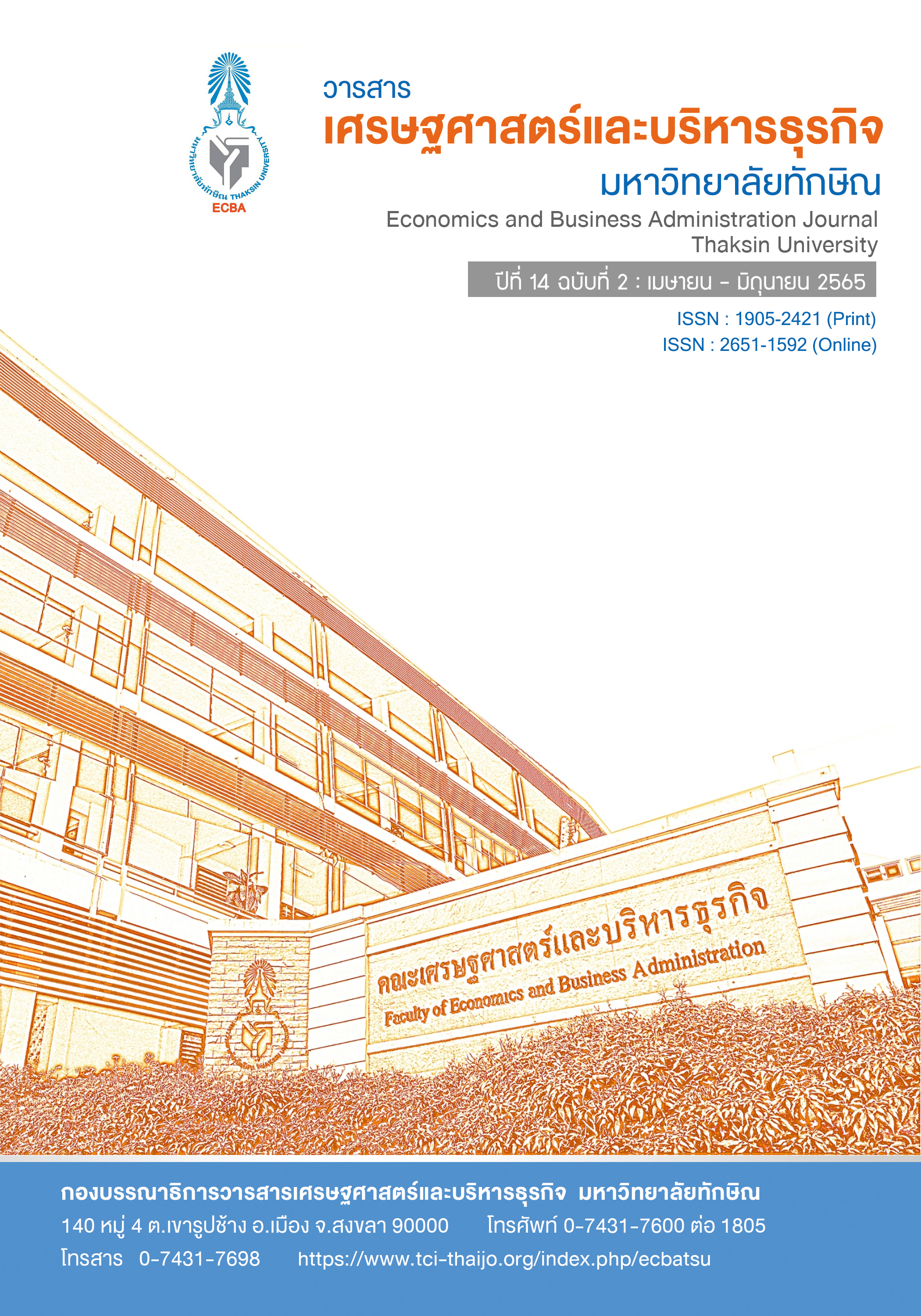Effects of Innovation Characteristics and Technology Acceptance on Intention to Use Online Shopping Application
Keywords:
Innovation Characteristics, Technology Acceptance, Intention to Use TechnologyAbstract
This research aims to investigate the effects of innovation characteristics and technology acceptance on intention to use online shopping application. The sample consisted of 400 online shopping application customers. The research instrument was an online questionnaire. Data was analyzed via frequency, percentage, mean, standard deviation and multiple regression analysis. The results revealed that innovation characteristics (Observability) and technology acceptance (Perceived-ease of Use and Compatibility) have positive effects on intention to use online shopping application respectively which explain 68.10 percent of the variance of intention to use online shopping application. Entrepreneurs, executives, marketeers in traditional or online retail business can use the research results as a guideline to develop or improve the online shopping application to meet customer needs more efficiently by concerning two innovation characteristics variables (Observability and Compatibility), as well as the technology acceptance variable (Perceived-ease of Use).
References
Chan-Olmsted, S., Rim, H., & Zerba, A. (2013). Mobile news adoption among young adults: examining the roles of perceptions, news consumption, and media usage. Journalism & Mass Communication Quarterly, 90(1), 126-147.
Choshaly, S.H. (2019). Applying Innovation Attributes to Predict Purchase Intention for the Eco-labeled Products: A Malaysian Case Study. International Journal of Innovation Science. 11(9), 583-599.
Chouyboonchoo, N. Sirichote, O., & Noknoi C. (2019). Effects of Technology acceptance and service quality on customer loyalty for electronic banking. Economics and Business Administration Journal, Thaksin University. 11(1), 31-52.
Cochran, W.G. (1997). Sampling Techniques (3rd ed.). New York: John Willey & Sons.
Davis, F. D. (1989). Perceived Usefulness, Perceived Ease of Use, and User Acceptance of Information Technology. MIS Quarterly. 13(3), 319-340.
Davis, F. D., Bagozzi, R. P., & Warshaw, P. R. (1989). User Acceptance of Computer Technology: A Comparison of Two Theoretical Models. Management Science. 35(8), 982-1003.
Electronic Transactions Development Agency. (2020). Thailand Internet User Behavior 2020. Retrieved from https://www.etda.or.th/th/Useful-Resource/publications/Thailand-Internet-User-Behavior-2020.aspx
Faqih, K. M., & Jaradat, M, R. (2015). Assessing the Moderating Effect of Gender Differences and Individualism-collectivism at Individual-level on the Adoption of Mobile Commerce Technology: TAM3 Perspective. Journal of Retailing and Consumer Services. 22(1), 37-52.
Fishbein, M., & Ajzen, I. (1975). Belief, Attitude, Intention and Behavior: An Introduction to Theory and Research. Reading, MA: Addison-Wesley.
He, Q. Duan, Y, Fu, Z., & Li, D. (2006). An Innovation Adoption Study of Online E-payment in Chinese Companies. Journal of Electronic Commerce in Organizations. 4(1), 48-69.
Kanjanawasee, S. (2001). Classical Test Theory (4th ed.). Bangkok: Chulalongkorn University Printing House.
Ketkaew, K., Potipiroon, W., & Srimai, W. (2020). Literature Review on the Factors Influencing
the Adoption of Mobile Applications. Journal of Management Sciences. 37(1), 163 -186.
Kongpetch, A., Vierraand, T., & Khongmalai, O. (2012). Adoption of SAP B1: A Case Study of Procurement Management in Non-Profit Organization. Master Degree in Thesis in Education, Thammasat University.
Namahoot, K.S. (2018). An analysis of Digital Banking Adoption Using Diffusion of Innovation Theory. Warasan Phuettikammasat. 24(2), 43-64.
Park, S.Y. (2009). An Analysis of the technology acceptance model in understanding university students’ behavioral intention to use e-learning. Educational Technology & Society, 12(3), 150-162.
Rogers, E. M. (2010). Diffusion of Innovations (5th ed.). New York: Simon and Schuster.
Sirichote, O. (2021). Technology Acceptance of Small and Medium Enterprises (SMEs) in Songkhla, Thailand. Princess of Naradhiwas University Journal of Humanities and Social Sciences. 8(2), 1-15.
Sukwadi, R., Caroline, L.S., & Chen, G.Y. (2022). Extended Technology Acceptance Model for Indonesian Mobile Wallet: Structural Equation Modeling Approach. Engineering and Applied Science Research. 49(2):146-154.
Vanichbuncha, K. (2019). Advanced Statistics Analysis by SPSS for Windows. (14thed.). Bangkok: Chulalongkorn University Printing House.
Venkatesh, V., Morris, M.G., Davis, G., & Davis, F.D. (2003). User Acceptance of Information Technology: Toward a Unified View. MIS Quarterly. 27(3), 425-78.
Downloads
Published
How to Cite
Issue
Section
License
Copyright (c) 2022 Economics and Business Administration Journal Thaksin University

This work is licensed under a Creative Commons Attribution-NonCommercial-NoDerivatives 4.0 International License.




